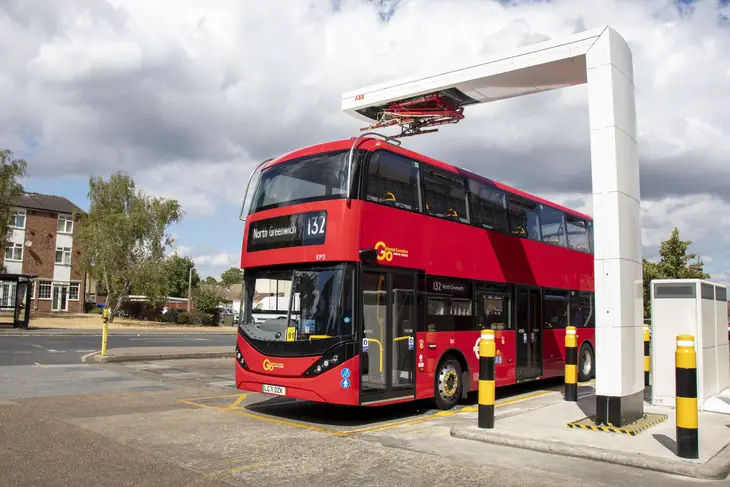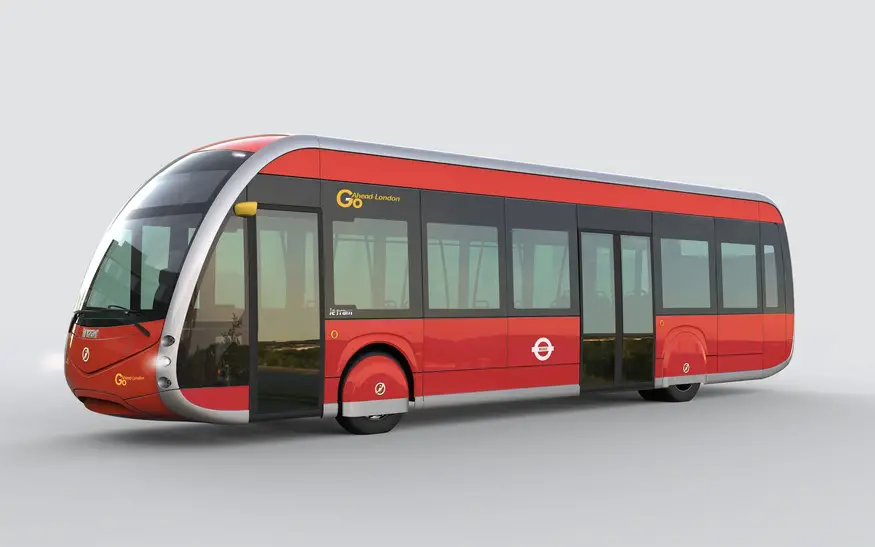London’s step into the Future: The Arrival of Eco-Friendly Electric Buses on Route 358
Table of Contents
The Anticipated Rollout: A route from Crystal Palace to Orpington
In a bold move towards achieving net zero emissions, Transport for London (TfL) announced the launch of 20 cutting-edge, emission-free electric buses. These buses are set to ply the 358 route, connecting Crystal Palace and Orpington. This initiative, initially planned for a 2023 debut, has been rescheduled to spring 2024, much to the anticipation of Londoners and environmental enthusiasts alike, including Mayor Sadiq Khan.
The ieTram
Crafted by Spanish manufacturer Irizar e-mobility, the ieTram electric buses are a unique blend of a tram’s accessibility and a city bus’s agility. Their design mirrors the efficiency of trams but retains the flexibility crucial for city transportation. This innovative design represents a significant leap in public transport, offering an environmentally friendly alternative without compromising on functionality.
Charging Technology: The Game-Changer
A standout feature of the ieTram is its charging mechanism. Unlike the majority of TfL’s existing 850 electric buses that require overnight garage charging, the ieTram utilizes a state-of-the-art pantograph system. This mechanism allows for rapid, high-power charging via an arm-like structure connected to the bus’s roof. Strategically placed at each end of the route, these charging stations enable the buses to rejuvenate in under 10 minutes, a crucial factor for the smooth operation along one of London’s longest bus routes.

The Current State and Future Prospects
While the spring 2024 rollout of the ieTram is confirmed, TfL has indicated no immediate plans to expand the trial beyond the initial route. This decision contrasts with earlier expectations of a wider implementation following a successful trial. The reasons behind this shift in strategy remain unclear, and it raises questions about the broader adoption of electric buses across London. However, the fact that the project hasn’t been shelved is a positive sign, indicating a commitment to sustainable urban transit solutions.
The Potential Impact on London’s Transport
The introduction of the ieTram may initially be limited to the southeastern part of London, yet their impact cannot be understated. This pilot could pave the way for more widespread adoption of electric buses across the city, marking a significant stride towards eco-friendly public transport. It’s a step forward in redefining how Londoners commute, with an eye on sustainability and innovation.
As we await their arrival in 2024, one thing is certain: these electric buses are set to electrify London’s streets, offering a glimpse into a greener, more sustainable future. Whether commuting to Orpington or simply exploring the route, the ieTram promises an experience that’s more than just a ride – it’s a journey into the future of urban mobility.
Also Read
- A Sunny Outlook: Wind and Solar Outshine Fossil Fuels in the EU
- Volkswagen’s ID.7 GTX Duo Available in the UK
- Rivian & Volkswagen Alliance Gets German Approval
- Porsche Unveils First Electric Cayenne Prototypes
- Rivian Shares Surge 50% on Volkswagen’s $5 Billion Investment
Frequently Asked Questions
Will all London buses go electric?
London is progressively transitioning to electric buses as part of its commitment to reduce carbon emissions. This shift is evident with the introduction of the ieTram electric buses and other models across various routes.
How many electric buses are there in London as of 2023?
As of 2023, London boasts a significant number of electric buses. While exact numbers fluctuate, the fleet includes over 850 electric buses, a figure that’s set to increase with ongoing initiatives.
Which TfL bus routes are electric?
Several TfL bus routes have already embraced electric buses. Key routes include the 358 from Crystal Palace to Orpington, among others. The number of electric routes is expanding as more electric buses are rolled out.
Are the double-decker buses in London electric?
London has introduced electric double-decker buses on several routes, integrating them into the iconic symbol of the city’s public transport system. These electric double-deckers are part of London’s green transport revolution.
How many years do electric buses last?
Electric buses typically have a lifespan of around 12 to 15 years. This duration can vary based on factors like usage intensity, maintenance, and advancements in electric bus technology.
How are London electric buses charged?
London’s electric buses are charged primarily in two ways: overnight charging in garages and rapid charging via pantograph systems. The latter, used by the ieTram buses, allows for quick top-ups in under 10 minutes at designated charging stations along the route.
Are London buses electric or hybrid?
London’s bus fleet includes both electric and hybrid models. While there’s a growing number of fully electric buses, like the ieTram, the city also operates a considerable fleet of hybrid buses. These hybrid buses combine traditional combustion engines with electric propulsion systems, offering a more environmentally friendly alternative compared to traditional diesel buses.

